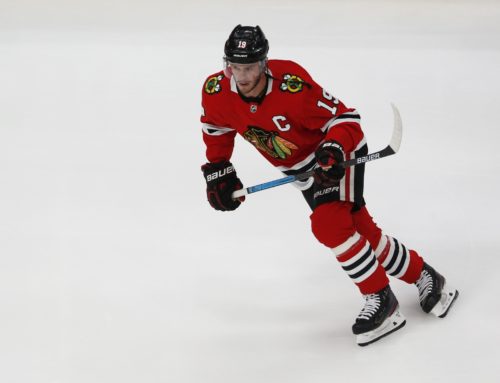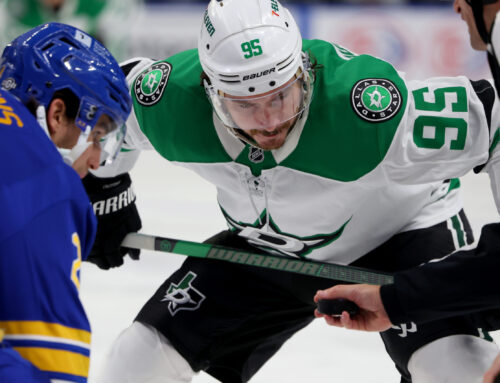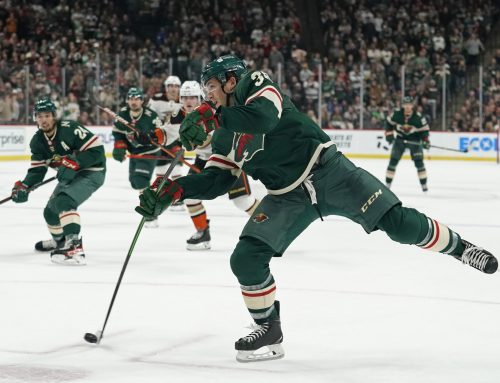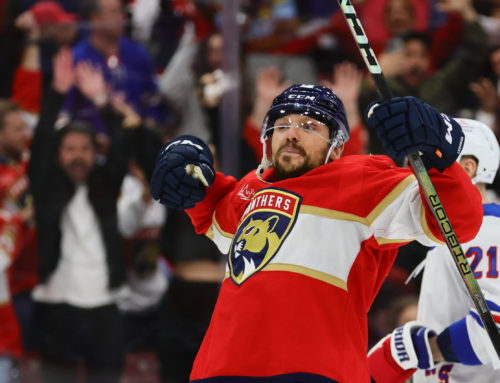Ramblings: Answering Your Mailbag Questions
Ian Gooding
2016-08-07

Answering your mailbag questions!
Thanks everyone for your mailbag submissions from both the comments and my email. I’ve tried to either answer each question or provide a written response to everyone, so I apologize if I missed anyone.
*
From user Chunky’s Choice: Which prospect defencemen do you foresee breaking out big time and becoming a major offensive star next season? Looking for the next Shayne Gostisbehere or John Klingberg here. Some candidates: Derrick Pouliot, Shea Theodore, Zach Werenski, Noah Hanifin, Julius Honka, Anthony DeAngelo, Ivan Provorov, Haydn Fleury.
I drafted Pouliot on my deep keeper league team back in 2012, the year he was drafted by the Penguins. It is now 2016 and I am still waiting for a real return on my investment as far as NHL numbers go. Does that mean I should give up on him at this point? Of course not, since he’s only 22 and he has been stalled by lack of defensive progress and the situation in Pittsburgh. But it is worth mentioning that he has been passed on the Fantasy Prospect Defenseman rankings by several other names you’ve listed.
DeAngelo is similar to some degree. He was drafted later (2014) by a Lightning team that simply hasn’t been able to make room for him and probably wouldn’t in the near future. The analytics-focused Coyotes acquired him in the offseason, yet they have also bolstered their defense with more NHL-ready defensemen, so he also seems less likely to make an impact in 2016-17.
I listed Theodore in my Draft Guide article about players to invest in for long-term payoff – players stuck between being a rookie and a sleeper pick. He will probably make the Ducks this season, but his power-play time will be limited behind veterans such as Cam Fowler, Sami Vatanen, and Hampus Lindholm.
There’s a reason that Provorov is listed as the top prospect defenseman: He scored 73 points in 61 games in the WHL last season. But he won’t be moving Gostisbehere off the first-unit power play, at least not in 2016-17.
So it comes down to situation. Which of these defensemen play for teams where there is real opportunity in 2016-17? I could see someone like Werenski in Columbus or Hanifin in Carolina making an impact. The real advantage for Hanifin is that he has already played a full season, although he is still only 19 years old.
All of these d-men are projected to be another year or two away from being the next Klingberg or Gostisbehere. But you never know. At least a few should be regular contributors to fantasy teams in 2016-17.
*
Pick up the 11th annual DobberHockey Fantasy Hockey Guide here (available now for immediate download)
OR
Get the Fantasy Guide and the Prospects Report as part of a package and save $7.00 – here!
*
Email submission: I'm not sure how to evaluate next year production for Brayden Schenn. He has good pedigree, a chance to be on the first line and was a monster last season half. However, he was slow to develop (late bloomer?), his SH% was high, and some view him more as a second or third-line player.
Schenn seemed like a great example of a post-hype sleeper last season, breaking through with a 59-point campaign which was fed off a virtual point-per-game pace after the new year (43 points in 45 games). So is Schenn for real?
A closer look at his career stats shows measured growth over the past few seasons: from 41 points in 2013-14 to 47 points in 2014-15 to 59 points in 2015-16. Last season was Schenn’s fifth full season, which happened at the age of 24, so he probably shouldn’t be considered that much of a late bloomer. The fact that he was a high first-round pick may make it seem as though he has been in the league longer than he really has.
If Schenn slots in as a left wing, he should easily fit in on the Flyers’ first line. Keep in mind that 80 percent of his even-strength shifts last season were with Claude Giroux. His shooting percentage was slightly higher (14.6%) than his career average (12%), so any regression shouldn’t be significant.
With all of that in mind, Schenn seems to be a strong bet to replicate his breakout 2015-16 campaign.
*
From Dobber writer Rick Roos: Do you foresee Brent Seabrook possibly losing his cush PP1 spot? I say no, given he's a coveted right-handed shot and posted 25 PPPts which included more power-play-points pairs (19) with Patrick Kane than any other defenseman had with any forward last season. But am I just seeing things the way I want to see them as a Seabrook owner?
I think Seabrook will be fine keeping his PP1 spot, and there are several reasons for that. Brian Campbell is the only incoming veteran who may threaten that role, but Campbell is a left-handed shot and may be better suited as a second-pairing power-play option at this point of his career. There doesn’t seem to be a youngster in the Blackhawks’ system ready to seize that first-pairing role yet.
Seabrook scored 25 of his 49 points on the power-play last season, his highest career totals in both categories. His chemistry with Duncan Keith, as well as the fact that he is simply a better option than Campbell, should keep him on the first-unit power play.
*
Also from Rick Roos: Do you think that any of the offseason coaching changes will have a pronounced negative or positive fantasy effect on teams? I'm talking about where goals scored or allowed would rise or fall by more than 15%.
There are many more factors involved in a team’s success than the coach. An experienced NHL coach can make a team slightly better or worse, but for the most part he is limited by the roster that he is provided. All four coaches have handled at least one NHL team previously, so there shouldn’t be a 15 percent goals decrease or goals allowed increase on any of Anaheim, Calgary, Minnesota, or Ottawa in 2016-17.
Of the group, the team that interests me the most is the Flames. Randy Carlyle and Bruce Boudreau are mostly known quantities by now. Guy Boucher takes over an Ottawa team that is similar in goals for and allowed to his earlier Tampa teams. But will the Flames’ puck possession improve with Glen Gulutzan at the helm? The Flames were at or near the bottom of the league in shot attempts for (Corsi) for four seasons under Bob Hartley. In addition, the Flames have improved in net with the addition of Brian Elliott. Those two factors could result in a 15 percent goals allowed improvement in Calgary.
*
Email submission: I've been tossing around the impacts of World Cup of Hockey on fantasy stats. Do you think that World Cup player participation will be highly correlated with quick starts to their respective NHL season from a fantasy perspective? Will World Cup participation impact second half performance of older players/band-aid boys? I'd like to go into my auction drafts with a clear strategy on how to handle World Cup players either upgrading or downgrading them. Thanks in advance for your thoughts on the subject.
The best comparison for this would be the 2013-14 season, when the NHL season was interrupted (extended) by the Winter Olympics in Sochi. However, instead of the tournament taking place in the middle of the season as the Olympics did, it will take place at the start of the season.
One possible angle is that even though they will be playing for their country, many players will view the World Cup simply as a warmup to the NHL season. So there’s the possibility that injuries won’t be as pronounced. This take is unscientific, but the players participating may already have a leg up on those that aren’t, which could lead to better returns in October and possibly November.
When you may want to sell or avoid World Cup players is later in the season, particularly those with teams that experienced deep playoff runs in 2015-16. The wear and tear from an earlier-than-normal start to the season will likely be most apparent at that point, in particular for older players or “band-aid boys.” So I think the key here is timing. Pay close attention to splits from the last few weeks or month. Those splits might be an indicator.
Overall, I’d say that a fast start and a slow finish should even itself out in the end, although how you finish will be more important than how you start if your league has fantasy playoffs. But how many top-end players will not be participating in the World Cup? Any player that isn’t might be worth a slight bump in value.
*
From user Spencer: I am interested in hearing your thoughts looking at relatively unproven centres with a lot of upside or new opportunities in comparison to more established ones. For example, players like Aleksander Barkov, Jack Eichel, Mark Scheifele, Nathan MacKinnon, Derek Stepan, Sean Monahan and Alex Galchenyuk in relation to Ryan Johansen, Patrice Bergeron, Logan Couture, Jason Spezza, Ryan O'Reilly, and Jeff Carter.
I won’t speak to all these players in particular, since there are too many listed here. But assuming you are talking about keeper leagues, this is a very interesting question.
Many keeper leaguers like to find that player who will be the next “big one” – that player on the verge of a breakthrough that will lead them to fantasy glory for many years. But in the process of finding the penny stock that will one day become blue chip, many fantasy owners also ignore the established veteran that can still provide solid returns – often at a discount.
Take Joe Thornton, for instance. He’s older than all of the players that you’ve listed. In many fantasy leagues, Thornton wasn’t even listed as a top 100 player entering last season’s fantasy drafts. Yet there he was at the end of the season, a top 5 scorer who recorded more assists than any other NHL forward. Even if he simply matched his 2014-15 production (65 points), he would still be worth a top 100 pick.
Unless you’re in a strip-down rebuild or are taking on a new keeper team that was left for dead by the previous owner, the current season is the one that matters the most. On one fantasy baseball keeper team last season, I knew within the first two months of the season that I wasn’t going to contend. So I sold the veterans that I had for young talent and finished in last place. This season, I focused on being more competitive. After a slow start, I currently sit in fourth place among 12 teams (which is in the money in this league). So a rebuild in the fantasy realm shouldn’t take as long as it will for real teams.
Many keeper leaguers want to focus on finding the future star, which makes sense. But there’s also something to finding the next Joe Thornton. Don’t undervalue the veterans.
*
From user Striker: When are the goalie changes taking place? Has the NHL publicly stated what the changes will be? I have seen virtually nothing on this since raised on Hockey Night in Canada eons ago.
The goaltending equipment changes were supposed to take effect for the 2016-17 season; however, nothing has been formally announced. So there’s the possibility that they may not be finalized until the 2017-18 season. Stay tuned, I suppose.
According to this article from Sportsnet, the main reduction appears to be in that of upper-body equipment. Pants and pads could also be reduced, but those changes likely won’t be as significant.
*
From user Mathieu: Why do some unsigned draftees need to go back through the draft to get to an NHL roster (ex.: Connor Bleackley) but others get to pick and choose where they want to play (ex.: Jimmy Vesey)?
Vesey was drafted in the third round of the 2012 draft by Nashville and stayed at Harvard for the full four years. When his fourth year finally ended near the end of the 2015-16 season, he was offered a guaranteed roster spot by the Predators. Because he stayed in college for the full four years following being drafted, he was able to become a free agent. He will be able to choose his new home on August 15.
If a drafted player plays in the CHL, however, it’s a different story. After he was drafted by Colorado in the 2014 draft, Bleackley stayed with the Red Deer Rebels of the WHL for two more seasons. Unable to come to terms with the Avalanche or the Coyotes (who acquired his rights at the trade deadline), Bleackley re-entered the 2016 draft and was chosen in the fifth round by St. Louis. Shortly after, Bleackley signed a three-year entry-level contract with the Blues.
My understanding of this is that the rules are different between college hockey and junior hockey. If anyone can shed further light on this, please let us know in the comments.
*
Email submission (edited for brevity): I mentioned my first two keepers already (John Gibson and Ryan Johansen), and I am completely torn on the third and change my mind about every other day. Aleksander Barkov or Dylan Larkin. Right off the bat the answer seems obvious in Barkov, but hear me out. 1) He completely negates my penalty minutes category as a Lady Byng-type player. He is only C eligible. He is injury prone. The biggest kicker here is I (and everyone in my league) is a diehard Wings fan, so picking up Larkin off FA last year was a steal, and being able to watch him produce for my boys in red was a double whammy. He also plays LW and C and puts up at least something in the PIM department. Hometown studs also always seem to carry an intangible value.
Do you think Larkin can score 30 this year? Knowing what you know, would you take Barkov with the high ceiling and risk kicking yourself whoever Larkin lights the lamp as you watch every wings game, or take a leap of faith in a player who could be the next best Red Wing for a decade?
One thing I’ve learned in fantasy hockey (and fantasy sports in general): Never let emotions get in the way of winning. Most of us have a favorite team, so we’d love to own players from that team. What’s better that cheering on both your real-life team and your fantasy team? Unfortunately, we have to look past that and pick with the head over the heart.
Could Larkin score 30 goals this season? It’s a possibility, but the key word here is “could.” He will be in tough to do so on a Wings’ team that is crumbling and will enter the season without its best player from the past few seasons in Pavel Datsyuk.
Meanwhile, Barkov has a slightly higher upside in both goals and points. The Panthers appear to be a team on the way up with a stable of young guns, and Barkov has developed solid chemistry with fellow youngster Jonathan Huberdeau and fountain-of-youth sipper Jaromir Jagr.
Having said that, if there is some way you can trade Larkin for a huge bag of gold in your Detroit-centric league, you should do so right away. Feed off the emotions of others in the league.
*
Enjoy your Monday. Follow me on Twitter @Ian_Gooding.
4 Comments
Leave A Comment
You must be logged in to post a comment.





 SEA
SEA NYI
NYI BUF
BUF DAL
DAL
 CBJ
CBJ ANA
ANA STL
STL L.A
L.A NYR
NYR

This is so important : “Never let emotions get in the way of winning.” and “Feed off the emotions of others in the league.”
Regarding the Vesey/Bleackley issue. Basically, if a player is drafted out of the NCAA or goes to the NCAA post-draft, the team that drafts them retains their rights for 4 years, following which they would become a free agent (July 1 in certain instances, Aug 15 in certain instances) if they don’t sign an entry level contract (ELC) in that time. If a player is drafted out of the CHL and does not agree to an ELC within 2 years, they re-enter the draft. If they are drafted again they have time to negotiate an ELC, but if they don’t sign eventually they would become a UFA. If they aren’t drafted in the re-entry draft I believe they become a UFA instantly. No team holds the rights of a player that they drafted indefinitely. It’s just that college players going to UFA makes more sense because they have somewhere to play the whole time, whereas a player drafted out of the CHL has added incentive to sign their ELC so that they can be a part of that team’s farm system and have a place to play after no longer being eligible for juniors. Otherwise they would be left trying to sign an AHL or ECHL contract.
Thanks for the explanation Lloyd!
I see your point about Thornton, but the guy asked a question seeking your view of two groups of relatively youngish players. You didn’t even try to answer his question. Obviously you can’t discuss all of them but you could have touched on a few.